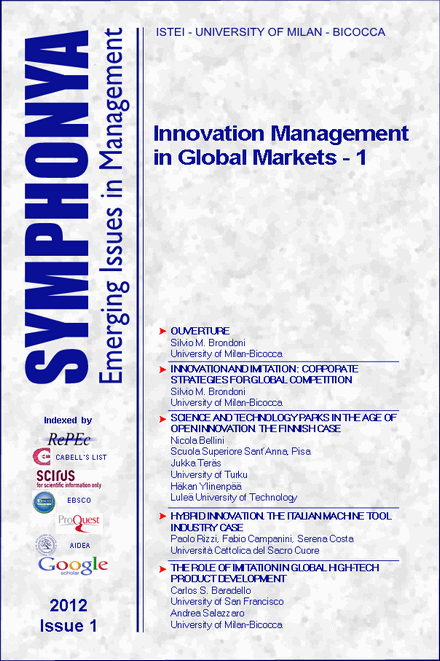Innovation and Imitation: Corporate Strategies for Global Competition
DOI:
https://doi.org/10.4468/2012.1.02brondoniKeywords:
Product Innovation, Product Imitation, Process Innovation, Process Imitation, R&D Policies, Global CompetitionAbstract
In open markets where competition is strong, innovation loses its role of ‘ideological hierarchy’ over imitation; both have the common goal of maximising company profitability, with the constraint of optimising performance results in the very short term. With these objectives and result constraints, the success of research and development activities is measured by the real improvement in the competitive supply potential, expressed by indicators such as time-to-market or patent use rate. The capacity to exploit the competition acquires prime importance, while the capacity to accumulate know-how becomes less important (for example with the traditional indicators of the number of patents per year).
Downloads
Published
How to Cite
Issue
Section
License
The authors retain all rights to the original work without any restrictions.
License for Published Contents

You are free to copy, distribute and transmit the work, and to adapt the work. You must attribute the work in the manner specified by the author or licensor (but not in any way that suggests that they endorse you or your use of the work).
License for Metadata

Symphonya published articles metadata are dedicated to the public domain by waiving all publisher's rights to the work worldwide under copyright law, including all related and neighboring rights, to the extent allowed by law.
You can copy, modify, distribute and perform the work, even for commercial purposes, all without asking permission.



